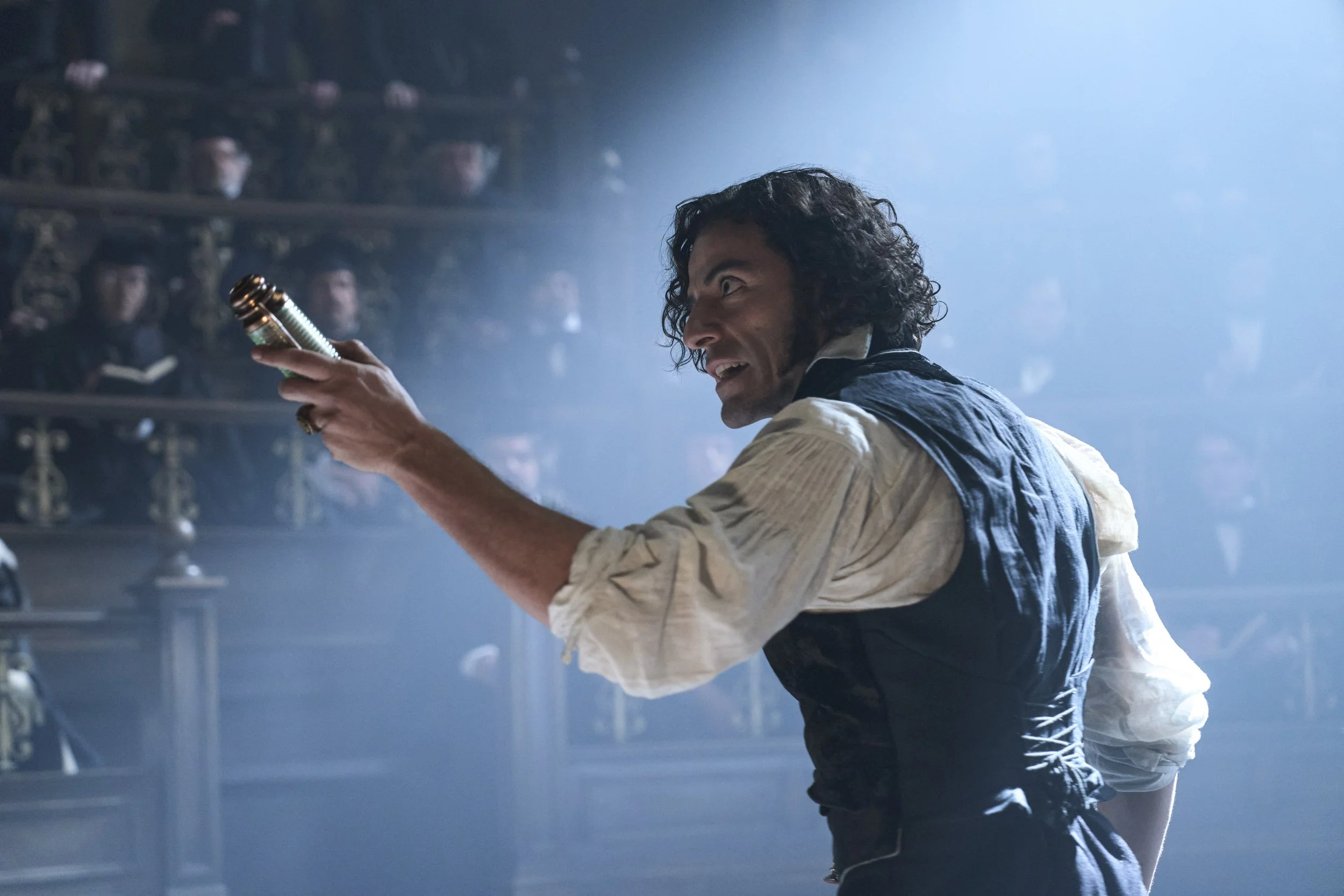The Beauty That Survives the Breaking: Guillermo del Toro’s Frankenstein
There are films that entertain, and then there are films that awaken something deeper. Guillermo del Toro’s Frankenstein belongs to the latter. It isn’t simply a retelling of Mary Shelley’s gothic masterpiece and it’s a resurrection. Through del Toro’s lens, the story of man, monster, and maker becomes a meditation on creation, forgiveness, and the fragile beauty of what it means to be seen.
From the very first frame, the film demands your full attention. It’s haunting, breathtaking, and profoundly human. You feel every shadow, every flicker of light, every heartbeat of something both dying and being reborn. The cinematography pulses like a living organism—rich with deep crimsons, glacial blues, and metallic silvers that speak to both obsession and metamorphosis.
And the performances? They don’t just act; they bleed. Oscar Isaac’s Victor Frankenstein is all sharp brilliance and quiet torment, while Mia Goth radiates a raw tenderness that keeps the film from collapsing entirely into despair. Jacob Elordi brings unexpected grace and vulnerability to the creature—so much so that you almost forget who’s supposed to be the monster.
This Frankenstein is not about horror—it’s about humanity. It asks: What happens when our creations mirror our own wounds? Can we forgive the things we’ve made… and the parts of ourselves we’ve destroyed in the process?
Why It’s a Must-See
What makes this adaptation essential viewing isn’t just its technical perfection or its star power—it’s the way del Toro dares to return to the emotional core of Shelley’s vision. He doesn’t show us a monster; he shows us a mirror. Every frame vibrates with questions of faith, guilt, and redemption. The film is steeped in Catholic symbolism, yet it never preaches—it pleads.
The score, a masterwork of haunting strings and reverent silence, moves like prayer. The pacing, deliberate yet urgent, draws you into an experience that’s more like a confession than a spectacle. Even the violence feels symbolic, a visceral reminder that creation always carries the cost of destruction.
A Cinematic Communion
At the premiere, the energy in the room felt almost sacred. This wasn’t just another red carpet—it was a communion of art and emotion. The actors arrived not merely as stars, but as extensions of the film’s spirit. Every glance, every pose seemed to channel del Toro’s vision of transformation and transcendence.
You could feel it in the styling: Oscar Isaac in sleek, obsidian tailoring that mirrored the darkness of his character’s ambition; Mia Goth glowing in ethereal white, like a spirit hovering between love and loss; Jacob Elordi in muted silvers that caught the light like memory itself.
Each look spoke a language of its own—one of rebirth, reckoning, and the tension between creation and collapse. It was as if the world of Frankenstein had spilled onto the red carpet, turning fashion into feeling.
The Beauty That Survives
Del Toro once said that monsters are the “patron saints of our blissful imperfections.” That idea breathes through every moment of this film. The creature’s anguish becomes a prayer for forgiveness—for the sins of its maker, for the sins of being alive.
There is a kind of grace in this Frankenstein, one that lingers long after the screen fades to black. It reminds us that the beauty we seek often emerges from what’s broken, bruised, and barely holding on.
Because in del Toro’s world, it’s not the perfect who are saved—it’s the ones who dare to love after being shattered.

